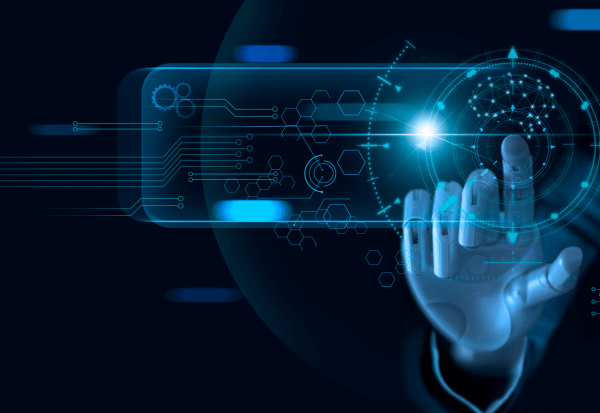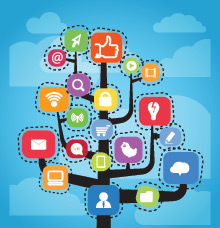Can you identify Parkinson’s diseases just by looking at face of a person? Can you catch early symptoms of Alzheimer’s by analyzing how a person moves? Can you identify whether a person has “real” cold (not that we fake to our bosses) by just listening to person’s voice? Can you identify whether a person has a lungs problem by analyzing his breathing? This all may sound preposterous at first, but all this is being made possible by AI, and for good reasons. Let’s see how…
Starting with 101 of how AI models work. In the simplest forms, AI models begin by collecting a diverse, but similar set of data. Examples are thousands of x-rays of the same body part, voice samples of many people, video samples of body movements and all that. The data is divided into two sets – Training data and validation data. Training data is used to “train” the model. We start with a certain model, and we keep on modifying/maturing the model until it starts giving predictable results. Once a mature model is in place, we test out the model on the validation set. This testing process gives more confidence that the model is working fine. Once the model has been trained and validated, it can be applied to new data and with a good degree of confidence, we can predict a certain outcome like whether a person has Parkinson or not. Let’s consider some real-life examples.
Researchers at an India university analyzed the voice samples of 630 people out of which 100+ were having cold. Each was asked to speak the same passage and numbers in the same order. After that, researchers broke down each person’s voice sample into spectrum of component frequencies(wavelengths). No human produces a single frequency. Most of time, the dominant frequency is accompanied by multiple other frequencies called harmonics. Data scientists and researchers were able to identify the main frequency and all the higher overtones. Then they used AI/ML to analyze the relationships between the amplitudes of these harmonics and found patterns that could distinguish the cold voices from the healthy voices. Mind it that, during cold our vocal cords swell and while speaking, we speak at a different frequency.
At India’s leading consulting firm in Digital Transformation, Happiest Minds, the Data Science team has been exploring the usage of computer vision technology in detecting Parkinson Disease. The team has built an AI model which can analyze facial expressions from an uploaded image to identify the presence of Parkinson’s disease. A key component of the model built is the facial feature extractor that extracts cues from eyes, eyebrows, lips, Nose, and other Salient/stress features from a facial image. The model can be exposed through an API that allows developers to integrate the model into their own applications or even hospital information systems/software. This can be useful for creating custom interfaces or integrating the model into existing workflows.
A couple of years back, researchers at MIT university found that the way we cough also can be used to distinguish healthy individuals from people who are suffering from viral infections. Well trained models can analyze individual components in the ECG waveform. Models can look for patterns and repeating features to identify each region of the ECG wave to predict coronary heart disease. Researchers from Mahmood Lab at Harvard School developed a deep-learning algorithm that can train itself to learn features and patterns that can be used to identify rare diseases in large pathology image repositories. According to a report published by the US government accountability office AI/ML based techniques can help early detection and cure of five selected diseases – Cancer, Diabetic Retinopathy, Alzheimer’s disease, heart diseases and COVID -19. Most of these make use of X-ray or MRI images.
Despite advancements in technology, the clinical adoption of AI/ML based techniques of diagnosis and treatment of diseases have not taken off in the way it was expected. Certain reasons cited by a government report are lack of demonstration of real-world performance across different clinical settings, integration(lack) of AI models into clinical workflows and issues related with regulatory approvals. Other problems are more at the fundamental level. The creation and training of these models requires the availability of large, clean, and diverse datasets. Datasets do not only require to be large; they need to be free of class imbalance also to produce robust AI models. There is also a mistrust factor between people who make these models and clinicians who are supposed to use these models.
That’s where Happiest Minds Technologies helps its customers. With our digital DNA, we have worked closely with our clients to clean, pre-process, and classify huge volumes of data. Once the datasets are ready, our in-house data scientists and AI engineers work together with the experts on the customer side to build trained, validated, and robust models. This does not end here. Happiest Minds also helps in integrating these models into clinical workflows, helps in designing and implementing apps that help measure the efficacy of these models and find ways to improve them. Our AI services include building AI strategy, developing & implementing custom models, optimizing algorithms and enabling organization use AI as a Service.
If you are thinking of building your own AI/ML models or thinking of integrating them in clinical workflows or using AI/ML for other applications, talk to us! Let’s make it happen together.

spearheads the business development for Healthcare & Life Sciences business at Happiest Minds and has over 22 years of experience in the IT industry managing relationships with healthcare companies in USA.
With his deep understanding of healthcare domain and digital technologies, Amit brings a unique perspective in his engagement with different players of the ecosystem. Amit has been managing different CXOs relationships for last many years and helped open multiple customer engagements in his career.
Amit holds an MBA degree from XLRI and Electronics and Communication Engineering Degree from NIT. He has been a software engineer for a major part of the career and now helps sell Happiest Minds software services. In his spare time, he is avid reader and reads across varied topics such as economics, science, technology and politics.








